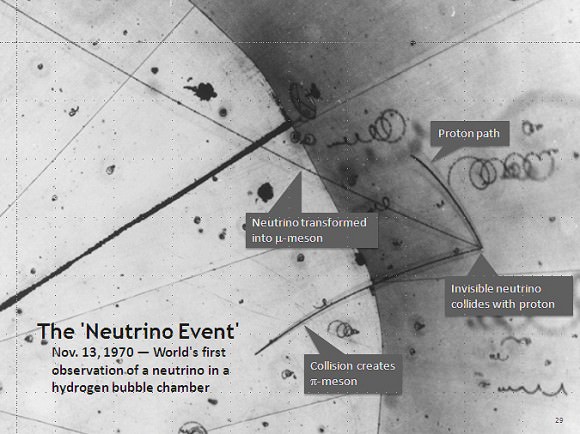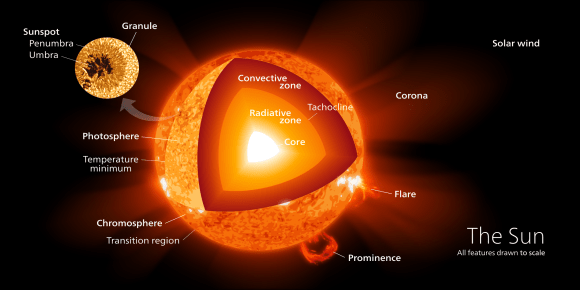What do Albert Einstein, Neils Bohr, Paul Dirac, and Marie Curie have in common? They each won the Nobel prize in physics. And today, Takaaki Kajita and Arthur McDonald have joined their ranks, thanks to a pioneering turn-of-the-century discovery: in defiance of long-held predictions, neutrinos shape-shift between multiple identities, and therefore must have mass.
The neutrino, a slight whiff of a particle that is cast off in certain types of radioactive decay, nuclear reactions, and high-energy cosmic events, could be called… shy. Electrically neutral but enormously abundant, half the time a neutrino could pass through a lightyear of lead without interacting with a single other particle. According to the Standard Model of particle physics, it has a whopping mass of zero.
As you can imagine, neutrinos are notoriously difficult to detect.
But in 1956, scientists did exactly that. And just a few years later, a trio of physicists determined that neutrinos came in not just one, not two, but three different types, or flavors: the electron neutrino, the muon neutrino, and the tau neutrino.

But there was a problem. Sure, scientists had figured out how to detect neutrinos—but they weren’t detecting enough of them. In fact, the number of electron neutrinos arriving on Earth due to nuclear reactions in the Sun’s core was only one-third to one-half the number their calculations had predicted. What, scientists wondered, was happening to the rest?
Kajita, working at the Super-Kamiokande detector in Japan in 1998, and McDonald, working at the Sudbury Neutrino Observatory in Canada in 1999, determined that the electron neutrinos were not disappearing at all; rather, these particles were changing identity, spontaneously oscillating between the three flavor-types as they traveled through space.
Moreover, the researchers proclaimed, in order for neutrinos to make such transformations, they must have mass.
This is due to some quantum funny business having to do with the oscillations themselves. Grossly simplified, a massless particle, which always travels at the speed of light, does not experience time—Einstein’s theory of special relativity says so. But change takes time. Any particle that oscillates between identities needs to experience time in order for its state to evolve from one flavor to the the next.

Kajita and McDonald’s work showed that neutrinos must have a mass, albeit a very small one. But neutrinos are abundant in the Universe, and even a small mass has a large effect on all sorts of cosmic phenomena, from solar nuclear physics, where neutrinos are produced en masse, to the large-scale evolution of the cosmos, where neutrinos are ubiquitous.
The neutrino, no longer massless, is now considered to play a much larger role in these processes than scientists had originally believed.
What is more, the very existence of a massive neutrino undermines the theoretical basis of the Standard Model. In fact, Kajita’s and McDonald’s discovery provided some of the first evidence that the Standard Model might not be as airtight as had been previously believed, nudging scientists ever more in the direction of so-called “new physics.”
This is not the first time physicists have been awarded a Nobel prize for research into the nature of neutrinos. In 1988, Leon Lederman, Melvin Schwartz, and Jack Steinberger were awarded the prize for their discovery that neutrinos come in three flavors; in 1995, Frederick Reines won a Nobel for his detection of the neutrino along with Clyde Cowan; and in 2002, a Nobel was awarded to Raymond David Jr., the oldest person ever to receive a the prize in physics, and Masatoshi Koshiba for their detection of cosmic neutrinos.
Kajita, of the University of Tokyo, and McDonald, of Queen’s University in Canada, were awarded the prestigious prize this morning at a news conference in Stockholm.

